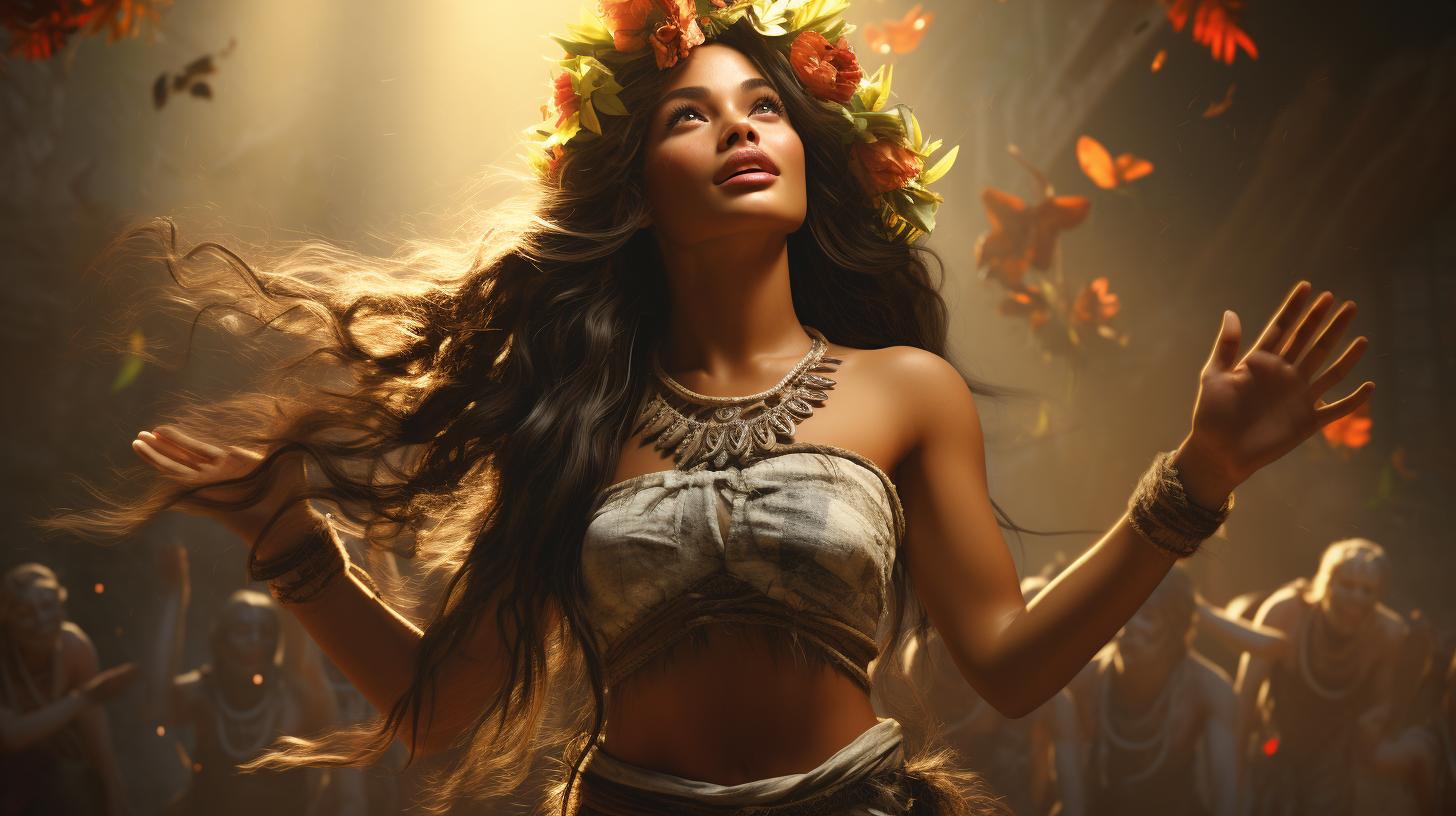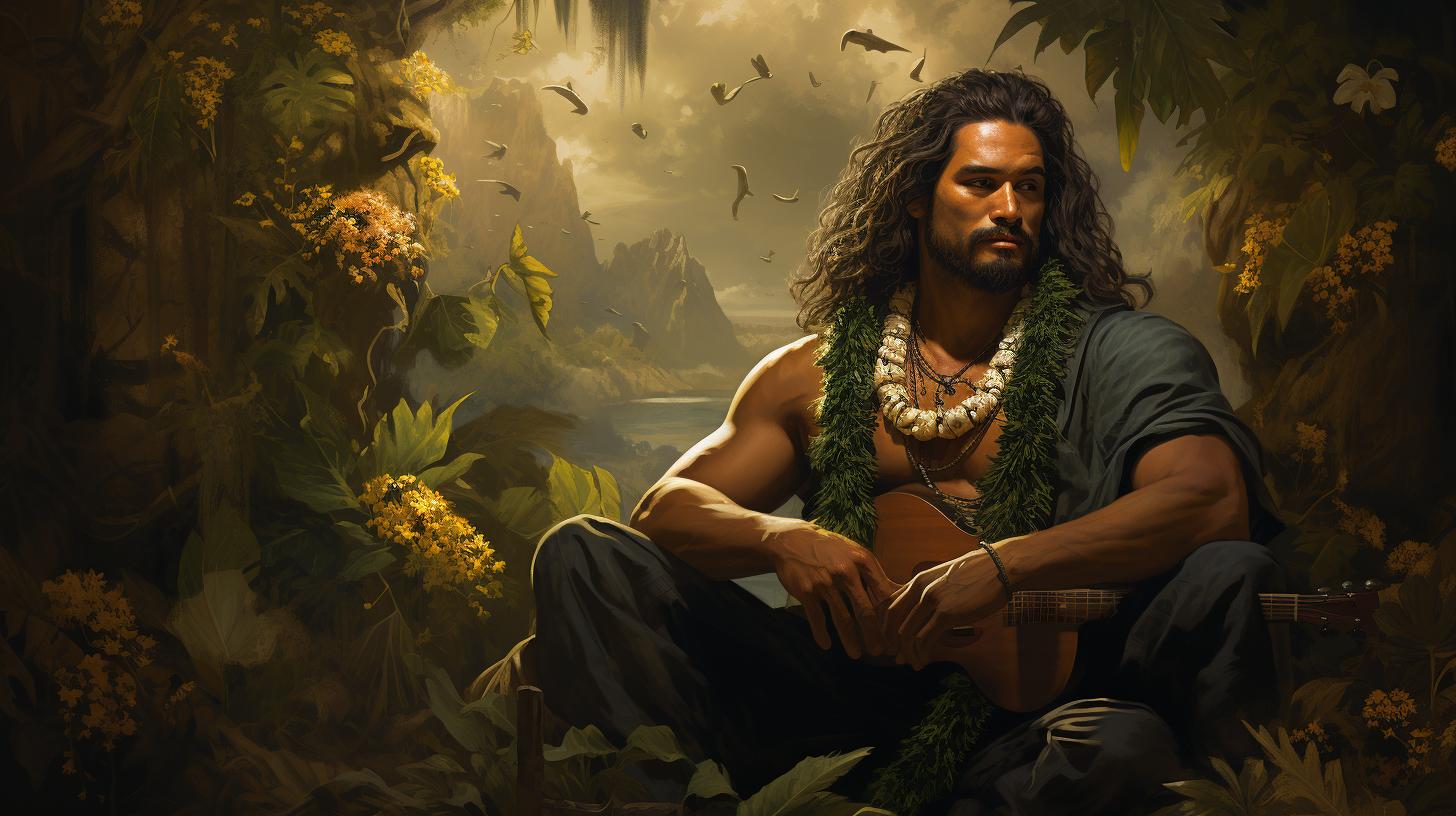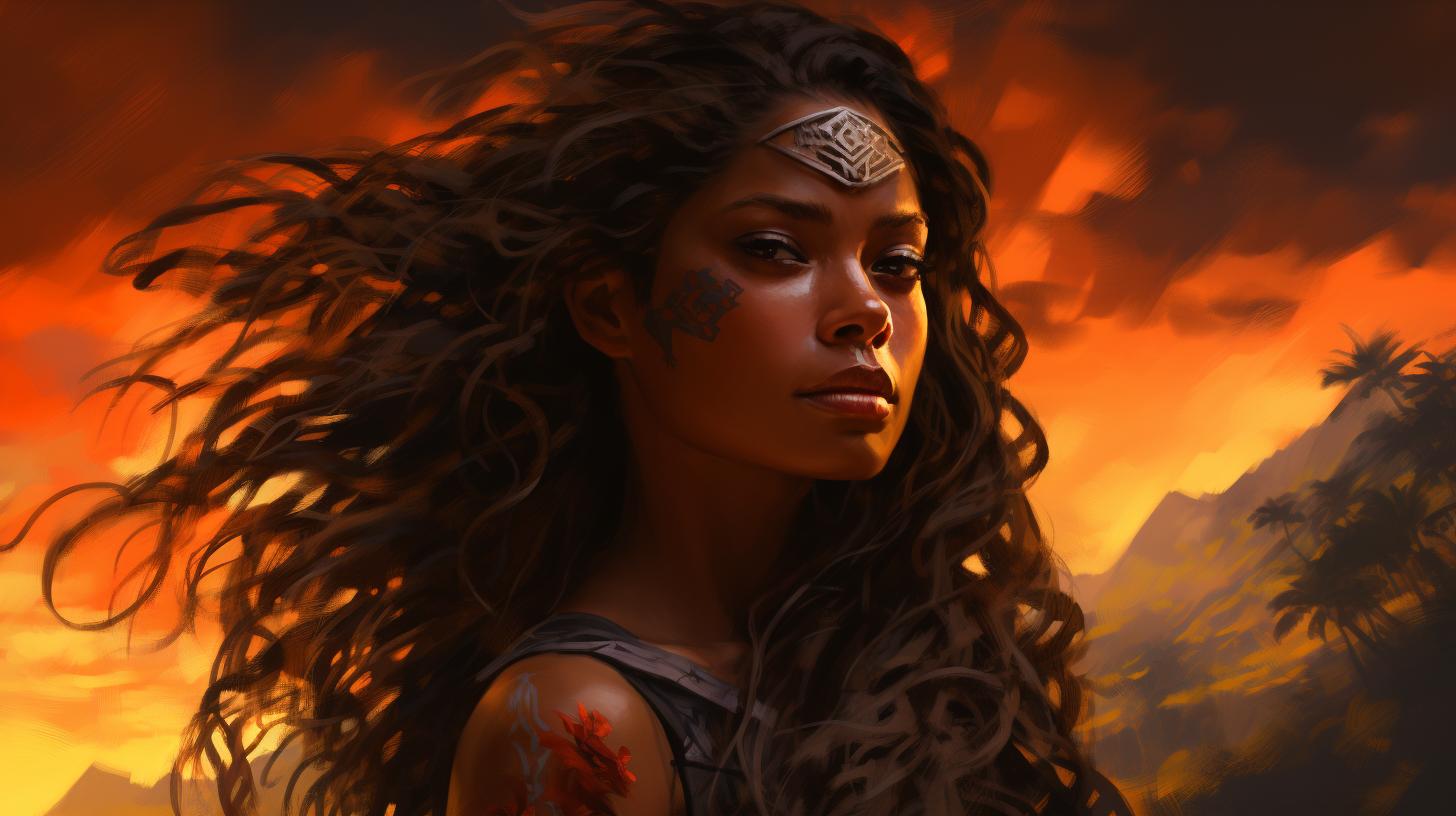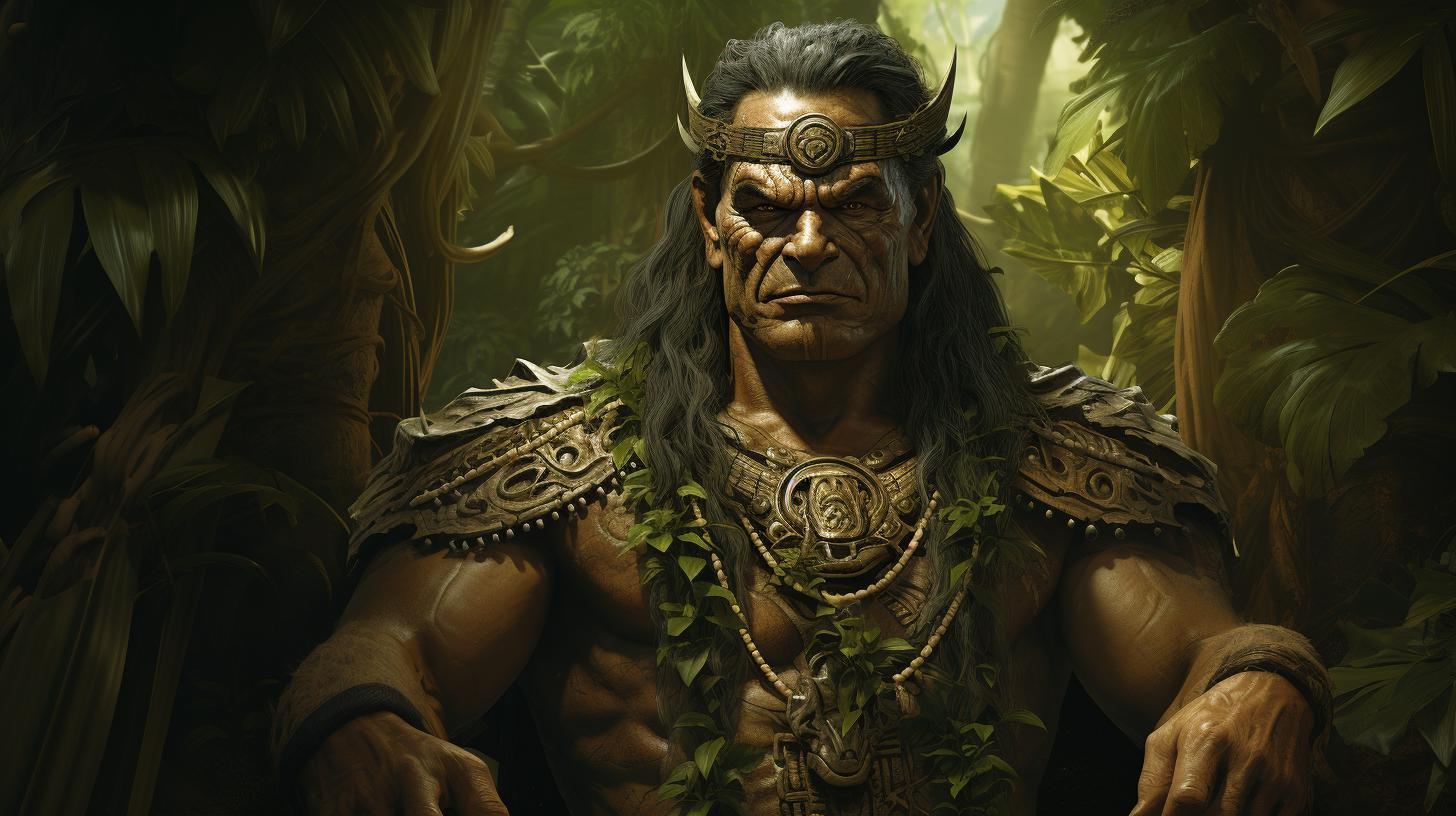Poliahu: The Enchanting Snow Goddess of Hawaii
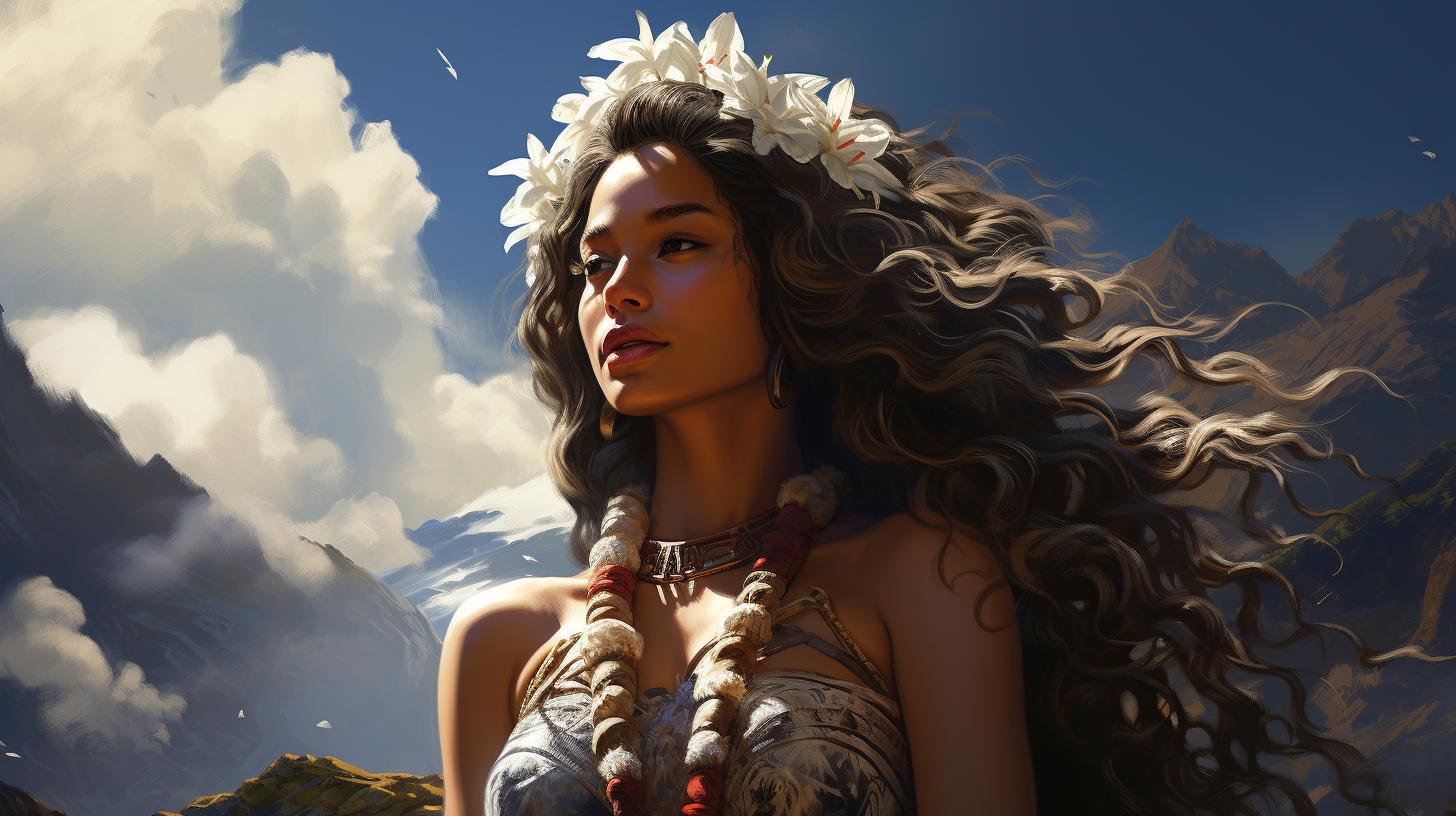
Poliahu is the enchanting Hawaiian goddess of snow, revered alongside Lilinoe, Waiau, and Kahoupokane. She dwells on Mauna Kea, the highest mountain in Hawaii, which was once covered by glaciers during the Ice Age.
Poliahu’s captivating legends showcase her rivalry with Pele, the goddess of fire, and her role in adorning Mauna Kea with a white snowy mantle. Discover Poliahu’s enduring significance in Hawaiian culture and her connections to the elemental forces of nature.
Explore the mythical tales and divine relationships of Poliahu and her sisters on Mauna Kea, along with their representation in art, literature, and symbolism.
1. The Mythology of Poliahu
In Hawaiian mythology, Poliahu is revered as the goddess of snow, embodying the beauty and power of the frozen element. She holds a significant place among the Hawaiian pantheon of deities and is considered one of the most revered goddesses of the snow.
Let’s explore the different aspects of Poliahu’s mythology and her connection to the natural world.
Poliahu: The Hawaiian Goddess of Snow
Poliahu, often described as the embodiment of snow itself, is hailed as the Hawaiian goddess of snow. She is known for her ethereal beauty and graceful presence. Poliahu’s name translates to “cloaked bosom,” signifying her ability to cover Mauna Kea, the highest mountain in Hawaii, with a blanket of snow.
The Sisters of Poliahu: Lilinoe, Waiau, and Kahoupokane
Poliahu is not alone in her divine domain. She is joined by her sisters Lilinoe, Waiau, and Kahoupokane, who are also associated with various aspects of snow and ice. Lilinoe is the goddess of mist and rain, while Waiau presides over freshwaters found on Mauna Kea.
Kahoupokane is the goddess of frozen water, symbolizing the solidification of Poliahu’s snowy realm.
Poliahu’s Home: Mauna Kea, the Highest Mountain in Hawaii
The majestic Mauna Kea serves as Poliahu’s abode, towering over the Hawaiian landscape. Rising to an elevation of over 4,200 meters (13,800 feet), Mauna Kea is not only the highest peak in Hawaii but is also renowned as the highest mountain in the world when measured from its base deep beneath the ocean.
Its lofty summit often attracts snowfall during the colder winter months, creating a stunning contrast against the tropical surroundings.
The Glaciers of Mauna Kea: Remnants of an Ice Age
During the Ice Age, Mauna Kea was partially covered by glaciers, leaving lasting remnants on the mountain. These ancient glaciers, with ice layers up to 120 meters thick, once spanned approximately 67 square kilometers (43 square miles) at heights reaching 3,000 meters (9,800 feet).
While the glaciers have long since melted, the frozen cores of Mauna Kea’s summit cones remain, a spectacular reminder of the magnificent ice formations that existed on this island located just 20 degrees from the equator.
Legends and Stories of Poliahu
Within Hawaiian mythology, the tales surrounding Poliahu, the goddess of snow, are rich with intrigue and symbolism. This section delves into the captivating legends and stories that epitomize the essence of Poliahu and her significance in Hawaiian culture.
Poliahu’s Conflict with Pele: Goddess of Fire
A prominent tale revolves around the tumultuous relationship between Poliahu and Pele, the goddess of fire. Their fierce rivalry often leads to heated arguments over the ownership of Mauna Loa, further fueling the elemental clashes between ice and fire.
Poliahu’s Beautiful Transformations on Mauna Kea
Poliahu enchants Mauna Kea with her ethereal beauty, adorning its summit in captivating displays of snow and ice. During the winter months, the mountain is transformed into a pristine white wonderland, showcasing Poliahu’s artistry and connection to the elemental forces of nature.
The Mythical Rivalry: Poliahu and Pele’s Arguments over Mauna Loa
A central theme emerges in the mythical rivalry between Poliahu and Pele, as they dispute ownership of Mauna Loa. These confrontations symbolize the delicate balance between fire and ice, highlighting the eternal struggle between opposing forces in the natural world.
The Importance of Poliahu in Hawaiian Culture
Poliahu holds deep cultural significance in Hawaiian tradition. As a deity intertwined with Mauna Kea, she represents the harmonious relationship between the Hawaiian people and their land. Poliahu’s legends and stories serve as a timeless reminder of the interconnectedness between nature, spirituality, and the cultural values cherished by the Hawaiian community.
Poliahu and the Snowy Majesty of Mauna Kea
The majestic summit of Mauna Kea offers a winter splendor like no other. As the temperatures drop, a magical transformation takes place, covering the mountain with a breathtaking layer of snow.
This unique sight in the tropics creates a mesmerizing spectacle that captures the imagination of all who witness it.
The Winter Splendor of Mauna Kea’s Summit
During the colder months, the peak of Mauna Kea becomes a winter wonderland. The snow-capped summit glistens under the first rays of the morning sun, casting a radiant red hue that transitions to a brilliant white as the day progresses.
This awe-inspiring display draws visitors from far and wide, eager to witness the unparalleled beauty of this snowy paradise.
Poliahu’s White Kapa Across the Mountain
Poliahu, the goddess of snow, is responsible for adorning Mauna Kea with her white kapa, a traditional Hawaiian cloak made of snow. Her touch covers the slopes and valleys with a pristine, heavenly blanket, transforming the landscape into a scene of ethereal beauty.
Poliahu’s presence is felt in every delicate snowflake that falls, creating a sense of tranquility and reverence for the natural world.
The Beauty of Snow and Ice at Mauna Kea
The beauty of snow and ice at Mauna Kea is a testament to the enduring power and grace of Poliahu. The frozen crystals delicately adorn the landscape, creating a picturesque panorama that captivates the hearts of all who visit.
It is a reminder of the delicate balance between the elements and the remarkable ability of nature to create such wonders even in unexpected places.
Poliahu’s Influence on Weather and Climate
Poliahu’s presence extends beyond the visual splendor of snow and ice on Mauna Kea. As the goddess of snow, she holds sway over the weather and climate of the mountain.
Her influence brings cooler temperatures, allowing for the formation and preservation of snow and ice on the summit. This unique microclimate has a profound impact on the ecological systems and biodiversity of the region.
Poliahu’s Sisters and Divine Relationships
Poliahu, the goddess of snow, shares a special bond with her sisters on Mauna Kea. These divine beings play significant roles in Hawaiian mythology and contribute to the enchantment of the mountain.
The Bond Between Poliahu and Her Sisters
Poliahu’s sisters, Lilinoe, Waiau, and Kahoupokane, represent different aspects of nature on Mauna Kea. Together, they create a harmonious balance that shapes the mountain’s unique character.
Waiau: The Goddess of Freshwater on Mauna Kea
Waiau, the goddess of freshwater, is closely associated with the springs and streams that flow from Mauna Kea.
Her presence nourishes the land and sustains life in the surrounding areas.
Kahoupokane: The Goddess of Frozen Water on Mauna Kea
Kahoupokane embodies the frozen water found on Mauna Kea, including icicles and frost. She adds an ethereal elegance to the mountain and showcases the captivating transformation of water into ice.
Lilinoe: The Goddess of Mist and Rain on Mauna Kea
Lilinoe, the goddess of mist and rain, brings gentle showers and refreshing mists to Mauna Kea.
Her presence brings a sense of tranquility and rejuvenation to the mountain and its surroundings.
These sister deities complement Poliahu’s role as the goddess of snow, contributing their own unique qualities to the mystique and natural beauty of Mauna Kea.
Poliahu: Snow Goddess of Endurance
Poliahu, the Hawaiian goddess of snow, embodies the spirit of endurance in Hawaiian mythology and religion. Her role reflects the resilience and strength needed to endure the harsh conditions of snow and ice atop Mauna Kea.
As the goddess of snow, Poliahu is revered for her ability to remain steadfast in the face of adversity.
Poliahu’s Role in Hawaiian Mythology and Religion
In Hawaiian mythology, Poliahu holds a significant position as the goddess of snow. She is worshipped and revered for her association with the wintery elements that adorn Mauna Kea. Poliahu plays a vital role in Hawaiian religion, symbolizing the interconnectedness between nature, spirituality, and human existence.
The Enduring Spirit of Poliahu in Modern Hawaii
Even in modern Hawaii, Poliahu’s presence endures, as her legacy is celebrated and honored. Her influence can be seen in various aspects of Hawaiian culture, from art and literature to festivals and rituals.
Poliahu’s enduring spirit serves as a source of inspiration for the people of Hawaii, reminding them of their deep connection to the natural world.
The Legacy of Poliahu and Her Cultural Significance
Poliahu’s cultural significance is deeply rooted in Hawaiian traditions.
Her portrayal in myths, legends, and oral histories highlights her role as a symbol of beauty, purity, and grace. Poliahu’s legacy is preserved through storytelling, dances, and rituals, ensuring that future generations continue to understand and appreciate the profound impact she has had on Hawaiian culture.
Poliahu and the Elemental Forces of Nature
Poliahu, the goddess of snow, is intimately connected to the Earth and the majestic mountains of Hawaii. Her presence is felt in the elemental forces of nature, particularly in her power over snow, ice, and cold.
Additionally, Poliahu’s influence extends to the changing seasons and the transformative beauty they bring.
Poliahu’s Connection to the Earth and the Mountains
Poliahu’s deep connection to the Earth is reflected in her association with Mauna Kea, the highest mountain in Hawaii. As the goddess of snow, she blankets this sacred mountain with her pristine white mantle, creating a powerful visual representation of her bond with the land.
Poliahu’s connection to the mountains represents her presence as a protector and guardian of the natural world.
Poliahu’s Power over Snow, Ice, and Cold
Poliahu’s dominion over snow, ice, and cold is central to her identity as the goddess of snow. She controls the frozen elements, shaping the landscape with her touch. With a wave of her hand, she can transform the Hawaiian tropics into a winter wonderland, covering the summit of Mauna Kea with a glistening layer of snow.
Poliahu’s power over these elements is both awe-inspiring and essential for the delicate balance of nature.
Poliahu’s Influence on the Changing Seasons
Poliahu’s presence is particularly pronounced during the changing seasons. As the seasons shift, her influence is felt in the transition from warm to cold, as well as the arrival and departure of snow.
She orchestrates these seasonal transformations, infusing the natural world with her ethereal beauty. Poliahu’s influence on the changing seasons underscores her role as a symbol of renewal and the cyclical nature of life.
- Poliahu’s deep connection to the Earth and mountains
- Her power over snow, ice, and cold
- Influence on the changing seasons
Poliahu: Symbolism and Representation
Poliahu, the Hawaiian goddess of snow, holds significant symbolic meaning in Hawaiian culture. She represents more than just the beauty of snow; she embodies various qualities and ideals that are highly valued in Hawaiian traditions.
Poliahu’s Symbolic Meaning in Hawaiian Culture
Poliahu symbolizes purity, grace, and serenity. Her white garments reflect her association with snow, which is often seen as a symbol of purity and innocence. Through her symbolic representation, Poliahu reinforces the importance of maintaining inner peace, tranquility, and a pure heart.
Poliahu as a Representation of Beauty, Purity, and Grace
Poliahu’s appearance and demeanor exemplify beauty, purity, and grace. She is depicted with flowing white garments and an ethereal aura, capturing the essence of her divine nature. Her radiant presence and serene demeanor serve as a reminder of the profound beauty found in nature and the importance of appreciating and protecting it.
Poliahu’s Place in Hawaiian Art and Literature
Poliahu’s influence extends beyond mythology and folklore. She is a prominent figure in Hawaiian art and literature, inspiring countless artistic interpretations and creative expressions. Paintings, sculptures, chants, and songs often pay tribute to Poliahu’s elegance and her role as a guardian of the snowy landscapes of Mauna Kea.
Her depiction in various art forms serves as a tangible connection to Hawaiian cultural heritage and helps preserve the legacy of Poliahu for future generations.
Overall, Poliahu’s symbolism and representation in Hawaiian culture reflect the profound reverence for nature, the pursuit of inner purity, and the appreciation of beauty and grace.
Through her various symbolic interpretations, Poliahu continues to inspire and captivate individuals, reminding them of the intrinsic connection between humans and the natural world.
Poliahu and the Human Experience
Poliahu, the goddess of snow, carries a profound influence on human emotions and spirituality. Her ethereal presence evokes a sense of awe and reverence, touching the hearts of those who encounter her legend.
As Poliahu weaves her story through the annals of Hawaiian mythology, she becomes intricately intertwined with the human experience, guiding and inspiring individuals on their own journeys.
Poliahu’s Influence on Human Emotions and Spirituality
Poliahu’s depiction as the goddess of snow embodies a myriad of emotions and spiritual significance.
Her snowy realm on Mauna Kea portrays purity, tranquility, and serenity, evoking a sense of calm and peace in the hearts of beholders. Poliahu’s ethereal beauty and powerful presence awaken a deep connection within individuals, stirring feelings of wonder, reverence, and introspection.
Many Hawaiians and visitors to the islands find solace and inspiration in Poliahu’s story and attributes. Her unwavering strength, grace, and resilience serve as a source of encouragement during challenging times, offering a guiding light in the face of adversity.
Poliahu’s influence on human emotions and spirituality extends beyond her mythical origins, permeating into the lives of those who seek meaning and connection.
The Story of Poliahu and Her Interactions with Humanity
Poliahu’s interactions with humanity are rich with tales of interweaving destinies.
Through her encounters, she reveals a deep understanding of human nature and the complexities of human relationships. From ancient Hawaiian chants to modern retellings, the stories of Poliahu’s encounters highlight compassion, love, longing, and the pursuit of harmony.
Legends depict Poliahu as a guardian and protector, guiding lost souls and offering solace to the weary. Her presence serves as a reminder to approach life with grace, humility, and kindness.
Poliahu’s interactions with humanity bridge the gap between the divine and mortal realms, fostering a profound connection between people and the essence of Poliahu’s spirit.
Poliahu as a Source of Inspiration and Wonder
Poliahu’s ethereal existence inspires awe and wonder in those who hear her tale.
Her story serves as a catalyst for creativity, sparking the imagination and igniting a sense of wonder about the majestic forces of nature. Artists, writers, and musicians draw inspiration from Poliahu’s beauty, strength, and the symbolism she represents.
From enchanting paintings to melodic compositions, Poliahu’s essence permeates creative expressions, inviting individuals to explore their own inner landscapes. Her story invites contemplation, provoking questions about the mysteries of the universe and the interconnectedness of all things.
Poliahu’s enduring presence throughout history speaks to the timeless inspiration she offers to those who seek to uncover the depths of their own potential.
Poliahu: Past, Present, and Future
Explore the historical significance, modern relevance, and future prospects of Poliahu’s mythology and cultural legacy.
The Historical Significance of Poliahu in Hawaiian History
Poliahu holds a prominent place in the annals of Hawaiian history, representing the enduring reverence for the elemental forces of nature. Her tales and legends showcase the profound connection between the Hawaiian people and the land.
Through the centuries, Poliahu’s presence has influenced cultural practices, rituals, and beliefs, weaving her into the tapestry of Hawaiian heritage.
Poliahu’s Relevance in Modern Society
Despite the passage of time, Poliahu’s influence remains palpable in modern Hawaiian society. Her depiction in art, music, and literature continues to captivate and inspire. Poliahu stands as a symbol of beauty, purity, and grace, reminding individuals of the importance of preserving and protecting the natural world.
Her story serves as a powerful reminder of the harmonious relationship between humans and the environment.
The Future of Poliahu’s Mythology and Cultural Legacy
Looking ahead, Poliahu’s mythology and cultural legacy are poised to endure. As climate change and environmental concerns become more pressing issues, the significance of Poliahu’s connection to snow, ice, and nature takes on heightened relevance.
Her stories and teachings serve as a call to action for the preservation of the planet. The future holds the potential for renewed interest in Poliahu’s mythology, ensuring that her legacy carries on for generations to come.
.














